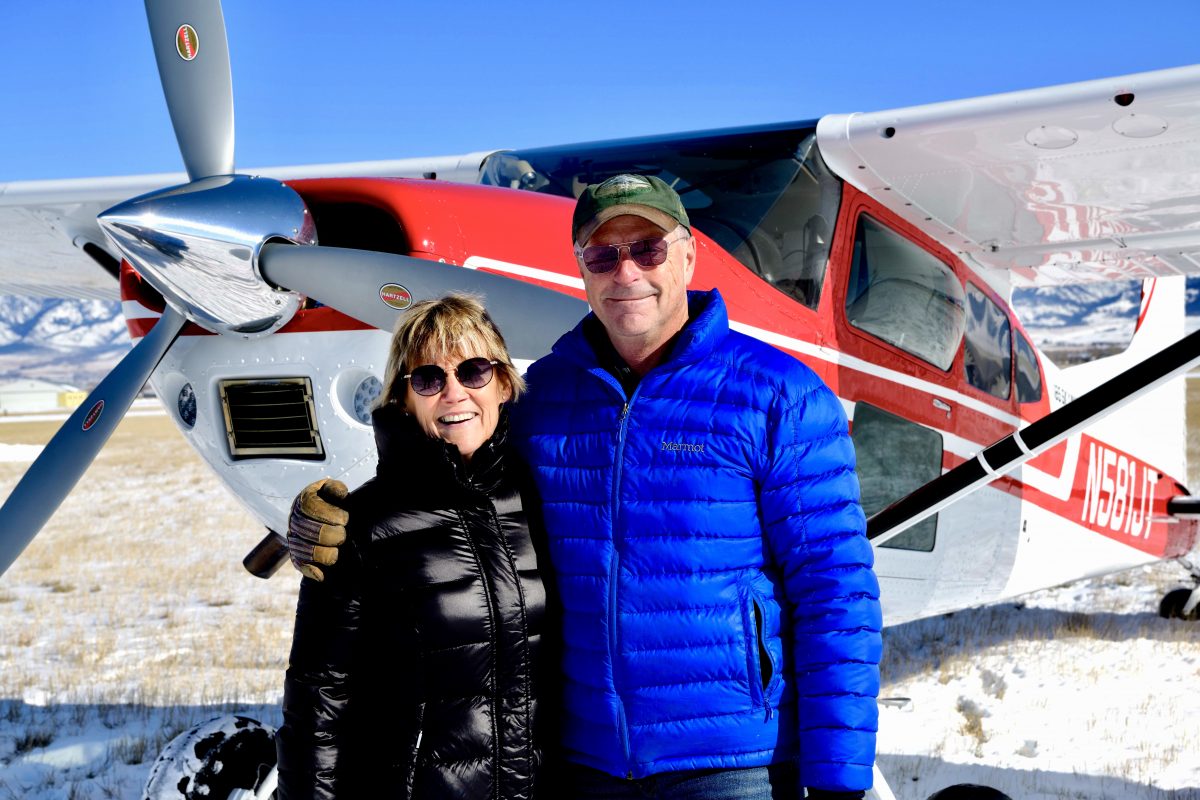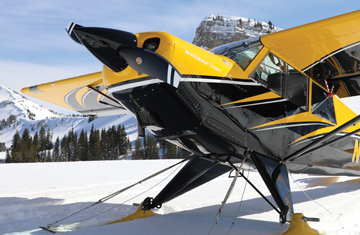
Flying in the backcountry is an exhilarating experience, offering breathtaking views and unique challenges that can test the skills of any pilot. If you’re new to this type of flying, one of the best ways to learn the ropes is to fly alongside experienced backcountry pilots. But before any group backcountry flight, there are some specific tips to keep in mind.
Flying solo is a thrill in and of itself. But flying alone in the backcountry is generally not recommended. If something were to go wrong and you find yourself stranded and/or injured in a remote location, being with others can greatly increase your chances of a safe rescue.
Beyond safety, flying with a group of other backcountry-minded pilots is just plain fun! The joy of flying is best shared with others, after all. Many backcountry pilots make the most of their trips with camping, hiking, fishing, hunting, and other group activities in the great outdoors.
#1: Keep it tight-knit
How many pilots should fly together in the backcountry? Experts say the ideal number is two to four aircraft in a group at a time. Any more than that, and backcountry group flying can get complicated — and riskier. If you’re part of a bigger gathering, for example, it’s a good idea to break out into smaller groups and stagger your departures.
It’s also important to choose who you fly with carefully. Know the group and each pilot’s level of experience. Most importantly, set and respect your personal minimums, and don’t succumb to peer pressure to do things outside your limits or comfort zone.
#2: Eliminate uncertainty with preflight planning
While group backcountry flying is not disciplined and structured in the same way as formation flying, there does need to be a level of coordination and preparation. A thorough preflight briefing will eliminate uncertainty and ensure everyone in the group is on the same page.
Choose a lead pilot first (the most experienced backcountry aviator in your group), then establish an order for the rest of the aircraft to follow. Review the overall route and destination, walking through each phase of flight and emergency protocols. Part of this includes having a clear plan for en route communications. Just as in formation flying, never assume that all pilots heard a call unless they acknowledge it.
The Recreational Aviation Foundation’s Safety Briefing Guide provides a very helpful checklist that accounts for everything from terrain elevation and obstructions to high traffic areas, emergency landing locations, sun angle, and visual illusions.
#3: Keep a safe distance (and enjoy the scenery!)
Remember, part of the reason you’re flying in the backcountry in the first place is to appreciate the beautiful view. While there’s no definitive distance to maintain in a group backcountry flight, experts say they usually stay at least ¼ to ½ mile apart.
Try to strike a balance where you can easily see the aircraft in front of you, while ensuring you’re well out of their way if they have an issue. This way, you can relax a bit and appreciate your surroundings.
Before venturing into backcountry flying, you need to ensure your aircraft is equipped to get you in and out of remote airstrips. The right modifications can totally transform a stock airplane, making backcountry flying safer and more accessible. That’s why Hartzell Propeller offers a selection of lightweight composite and durable metal backcountry propellers for rugged backcountry operations.
Every one of our durable backcountry props is designed to maximize performance in the backcountry, offering shorter take-off rolls and better climb rates — not to mention stunning ramp appeal.

To support the future of recreational aviation, Hartzell Propeller is proud to offer a $1,000 discount on the purchase of one of four new backcountry propellers exclusively for members of the Recreational Aviation Foundation. Hartzell Propeller will also make a $250 contribution to the RAF mission for every member who buys a new Hartzell prop for backcountry flying. Get more details here.